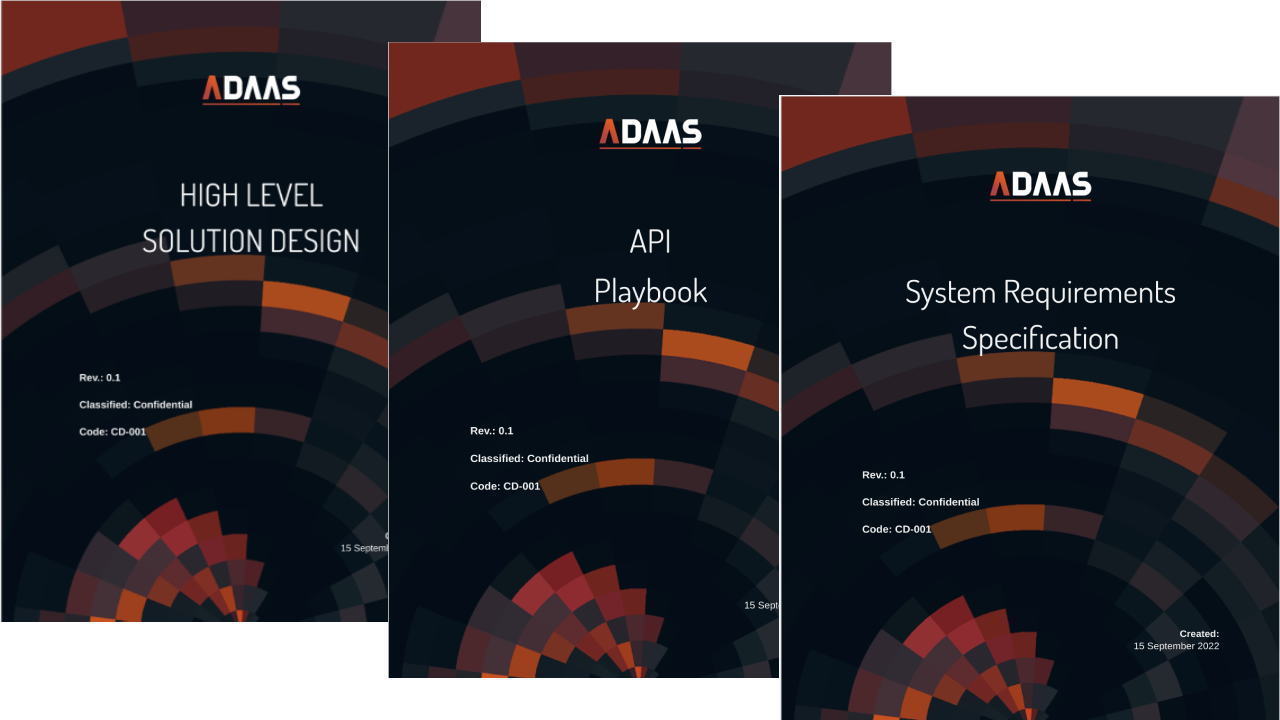ADAAS Insights
The Impact of Documentation on Product Price: Assessments and Due Diligence
Learn how documentation influences product price during assessments and due diligence. Comprehensive and well-structured documentation boosts transparency, reduces risks, and enhances buyer confidence, leading to potentially higher valuation and smoother transactions. Discover the key aspects of documentation that impact product price and ensure you're prepared to showcase the value of your product.
Introduction
Learn how documentation influences product price during assessments and due diligence. Comprehensive and well-structured documentation boosts transparency, reduces risks, and enhances buyer confidence, leading to potentially higher valuation and smoother transactions. Discover the key aspects of documentation that impact product price and ensure you're prepared to showcase the value of your product.
Importance of Documentation in Assessments and Due Diligence
Documentation serves as a bridge between the buyer and the product, enabling a thorough evaluation of its potential. It provides key information about the product's features, architecture, implementation details, and usage guidelines. Assessors and investors heavily rely on documentation to assess the product's value, technical feasibility, and long-term viability.
Key Factors in Documentation That Impact Product Price
Several aspects of documentation significantly influence the perceived value and pricing of a product during assessments and due diligence. These include:
- Clarity and Completeness
Clear and concise documentation that accurately represents the product's capabilities and functionalities adds credibility and value. Completeness ensures that no critical information is missing, avoiding misunderstandings and reducing uncertainties. - Organization and Structure
Well-organized documentation with a logical structure enables assessors to easily navigate and locate relevant information. It showcases professionalism and a systematic approach, positively impacting the product's perceived value. - Technical Specifications and Architecture
Detailed technical specifications, system architecture diagrams, and component interactions provide insights into the product's underlying technology. This helps assessors gauge scalability, performance, security, and compatibility aspects, influencing the product's valuation. - User Documentation and Guides
Well-documented code, accompanied by meaningful comments, improves the product's maintainability and extensibility. It demonstrates the developer's professionalism and facilitates future enhancements, positively affecting the product's perceived value. Also, some compliances requires code comments even just to apply for the software certification. - Change Logs and Versioning
Transparent change logs and versioning history showcase the product's evolution, bug fixes, and feature enhancements. They indicate an active development cycle and a commitment to product improvement, instilling buyer confidence and potentially influencing pricing.
Benefits of Comprehensive Documentation
Comprehensive documentation offers several benefits during assessments and due diligence, including improved transparency, reduced risks and uncertainties, enhanced buyer confidence, efficient knowledge transfer, and smoother transition and integration into the buyer's environment. These benefits ultimately contribute to a potentially higher product valuation and a smoother transaction process.
Best Practices for Creating Documentation
To maximize the impact of documentation on product price, consider the following best practices:
- Involve Relevant Stakeholders
Collaborate with developers, product managers, and other key stakeholders to ensure that documentation accurately represents the product and its features. Their insights and expertise are invaluable in capturing critical information. - Maintain Documentation Throughout the Product Lifecycle
Documentation should be a continuous effort, updated and maintained as the product evolves. Regularly review and revise documentation to reflect any changes, improvements, or new features. - Use Clear and Consistent Formatting
Adopt a consistent formatting style across all documentation components. Use headings, subheadings, bullet points, and other formatting techniques to enhance readability and make information easily accessible. - Ensure Accessibility and Availability
Make documentation easily accessible to assessors and potential buyers. Consider providing online access, downloadable PDFs, or other convenient formats. Ensure that documentation is stored in a secure location and accessible to authorized individuals.
Conclusion
Documentation plays a crucial role in determining the price of a product during assessments and due diligence. By investing time and effort into creating comprehensive and well-structured documentation, you can enhance transparency, mitigate risks, and instill buyer confidence. Follow the best practices outlined in this article to create documentation that effectively showcases the value of your product. With thorough documentation, you can maximize your chances of achieving a favorable product valuation and a successful transaction process.
Let's Dive In — Contact Us to Learn More
If you identify any mistakes in the article, kindly inform us so that we can rectify them



